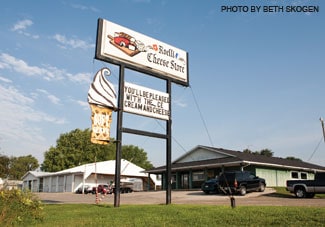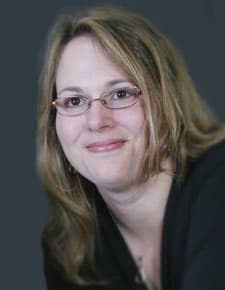MADISON MAGAZINE / OCTOBER 2010 / THE DAIRYLAND RENAISSANCE
Who makes the best cheese in the world? We do.
I’ve seen a thousand places just like it. A collection of white outbuildings on a corner in small-town Wisconsin surrounded by cornfields and, more than anything else, sky. I pull up next to a pick-up truck that looks not unlike my own brother’s, breathe in the settling gravel dust as I search out the entrance to the cheese plant, comfortable in all this familiarity.
Chris Roelli comes out from behind the vat, blue jeans and a white T-shirt, day-old scruff shaded by a ball cap pulled low, kind eyes. He looks like every guy I went to high school with, and I smile at his capable handshake.
And then he says, “We’re making Cheshire today, an English farmstead cheese. It’s very dry, picot, but silky smooth. Almost a kind of chalky texture to it, but it cleans up real nice on the palate,” and I realize I don’t know anything about cheese or good old Wisconsin farm boys at all.
Roelli is a fourth-generation cheese maker, a rarity in an industry that suffered greatly throughout the 1980s and ’90s, forcing a lot of folks out of business—and the same thing almost happened to his family. For years Wisconsin cheese makers specialized in big blocks of commodity cheddar, the cheaper and more homogenized the better, because that’s what it took to compete. Three generations of Roellis made a name for themselves producing quality cheddar and selling it alongside other locally produced brands out of their retail shop on Highway 11 in Shullsburg—meanwhile many of us spent more on a Packer game-day cheesehead than we did on a hunk of cheese—and we certainly weren’t paying attention to its origins.
All around the state people were selling to Kraft or other large companies as cheaply as possible, and shuttering one after the other—the Roelli family shut the cheese factory down in 1991. By 2004, Wisconsin was losing hundreds of dairy farmers each month, and between five and ten cheese factories a year.
That same year Jeanne Carpenter was hired by the Wisconsin Department of Agriculture, and U.S. Senator Herb Kohl issued a $2 million mandate to reinvigorate the dairy industry. Carpenter and her team of four used the money to found a nonprofit called the Dairy Business Innovation Center, a virtual team of consultants working closely with existing and potential cheese makers and dairy farmers throughout the state to secure funding sources and help with grant writing, business plans and general business development. They also subsidize a quasi-foreign exchange program, where cheese makers from other countries visit us (or vice versa) to swap skills. Meanwhile, there was already a burgeoning network of specialty cheese makers organizing and comparing notes through the Wisconsin Specialty Cheese Institute (founded in 1994 in cooperation with the Wisconsin Cheese Makers Association and the Wisconsin Milk Marketing Board). In 2006 Carpenter drafted a preemptive press release declaring California had finally surpassed Wisconsin as a leading cheese state, but luckily she never had to publish it.
The efforts of the previous years started to pay off and Wisconsin’s dairy industry rallied. Not only did farmers and plants stop closing, Wisconsin added forty-three new dairy plants over the next six years. Today Wisconsin is still the number one cheese-producing state in the country, and has been for a century. We produce about 2.6 billion pounds of cheese every year (over a million pounds more than California), 477 million pounds of which is specialty cheese—and that’s where the best part of the story lies. For the past four years, retail sales of specialty cheese have seen a 3.9 percent growth every single year, and it spiked up to 9.2 percent growth last year.
Of Wisconsin’s 127 cheese plants, ninety-two of them now manufacture at least one specialty cheese. Wisconsin produces 48 percent of all the specialty cheese in the United States. With the help of the DBIC, the Wisconsin Milk Marketing Board, the Wisconsin Cheese Makers Association, Carpenter’s own nonprofit Wisconsin Cheese Originals, the Wisconsin Specialty Cheese Institute, the Center for Dairy Research at the UW, Dairy Management Inc., and more, cheese making in Wisconsin is sexy and profitable again, led by a resurgence of talented, small-scale, small-batch artisans like Chris Roelli.









